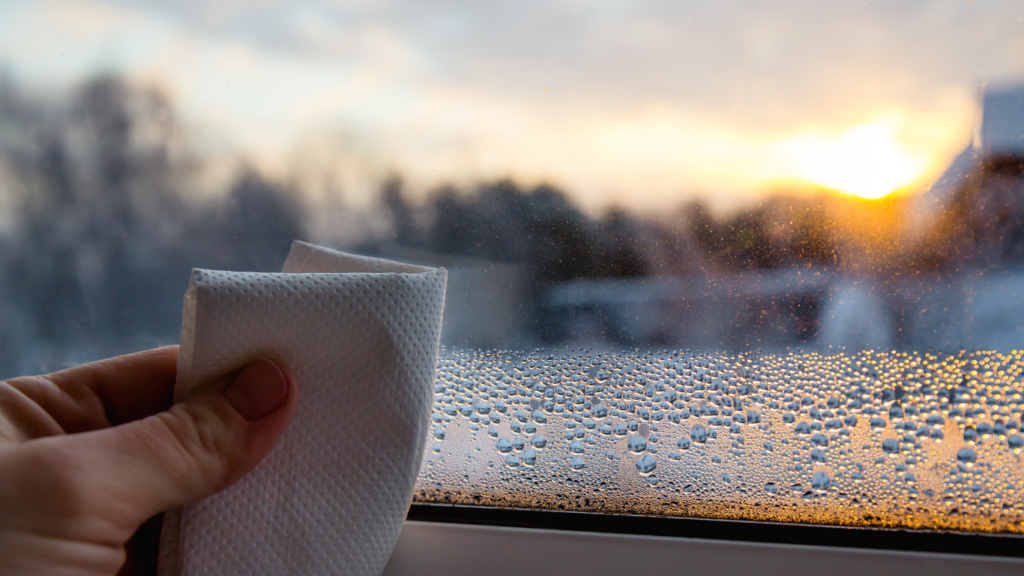
As the rainy season arrives, there is a much increase in the humidity of the air. Humidity simply means the moisture or water vapor in the air. If water vapors are more in the air, it is high humidity, and when water vapors are less it is low humidity. Humidity impacts our health and well-being.
When it is high humidity, sweat evaporates slowly from your body, making your body work harder to stay cool. It also encourages the growth of bacteria, viruses, molds, and fungi. As water vapor content increases, our body struggles harder for oxygen in the air. Humidity also alters the air quality. Air becomes heavier and keeps air pollutants closer to the ground.
Very low humidity on the other hand dries out the airways. Humidity plays a significant role in our health especially respiratory health, affecting both the upper and lower respiratory tracts. Here is an overview of how different humidity levels impact respiratory health:
High Humidity
High humidity can impact respiratory health in the following ways:
Allergic Reactions and Asthma
- Mold and Dust Mites: High humidity promotes the growth of mold, dust mites, and other allergens. Exposure to these allergens can trigger allergic reactions and asthma attacks, causing symptoms such as wheezing, coughing, and shortness of breath.
- Pollen: Humid conditions can make pollen particles stickier, increasing the likelihood of them being inhaled and causing allergic reactions.
Difficulty Breathing
- Air Density: High moisture levels make the air feel heavier and denser, which can lead to difficulty in breathing, particularly for individuals with chronic respiratory conditions like asthma, chronic obstructive pulmonary disease (COPD), and bronchitis.
- Heat Stress: High humidity often accompanies high temperatures, which can cause the body to overheat. This can put additional strain on the respiratory system as the body works harder to cool down.
Increased Risk of Respiratory Infections
- Bacteria and Viruses: High humidity creates an environment conducive to the growth and spread of bacteria and viruses. This increases the risk of respiratory infections, such as the common cold and influenza.
- Fungal Infections: Fungi thrive in humid conditions, leading to an increased risk of fungal infections, particularly in individuals with compromised immune systems or pre-existing respiratory conditions.
Worsening of Chronic Respiratory Conditions
- Asthma: High humidity can cause the airways to become more inflamed and constricted, leading to increased asthma symptoms and potentially more frequent asthma attacks.
- COPD: Individuals with COPD may experience symptoms, such as increased mucus production, coughing, and difficulty breathing, due to high humidity.
General Respiratory Discomfort
- Phlegm Production: High humidity can increase mucus production in the respiratory tract, leading to congestion and discomfort.
- Throat Irritation: Humid air can cause throat irritation and a feeling of heaviness in the chest, making breathing uncomfortable.
Sleep Disturbances
- Poor Sleep Quality: High humidity can make it difficult to sleep comfortably, which can lead to poor sleep quality. This can have a negative impact on overall respiratory health, as the body needs adequate rest to repair and maintain respiratory functions.
Mitigation Strategies
- Dehumidifiers: Using dehumidifiers can help maintain indoor humidity at optimal levels (30-50%), reducing the risk of respiratory issues. Clean the device often to prevent any harmful germs growth.
- Air Conditioning: Air conditioners can also help reduce indoor humidity levels while cooling the air, making it easier to breathe.
- Ventilation: Ensuring proper ventilation in living spaces can help manage humidity levels and improve indoor air quality.
- Allergen Control: Regular cleaning and maintenance to reduce the presence of mold, dust mites, and other allergens can help mitigate the effects of high humidity on respiratory health.

Low Humidity
Low humidity can have adverse effects on respiratory health described below :
Dry Airways
- Irritation: Low humidity can dry out the mucous membranes in the respiratory tract, leading to irritation of the nasal passages, throat, and lungs. This can cause discomfort, coughing, and a scratchy throat.
- Reduced Mucus Production: Dry air can lead to decreased mucus production, which is essential for trapping and clearing out dust, bacteria, and other particles from the airways.
Increased Risk of Respiratory Infections
- Reduced Mucociliary Clearance: The moist mucous layer in our respiratory tract traps and moves particles out of the tract. Dry air can impair this process, making it easier for viruses and bacteria to enter the respiratory system and cause infections such as the common cold and influenza.
Worsening of Chronic Respiratory Conditions
- Asthma: Dry air can worsen asthma symptoms, leading to increased bronchoconstriction and inflammation. This can result in more frequent and severe asthma attacks.
- Chronic Obstructive Pulmonary Disease (COPD): People with COPD may experience worsening symptoms such as shortness of breath, coughing, and increased mucus production in dry conditions.
Nosebleeds and Sinus Issues
- Nosebleeds: Low humidity can dry out the nasal passages, making the blood vessels more prone to cracking and bleeding.
- Sinusitis: Dry air can lead to the drying out of sinus passages, increasing the risk of sinusitis, and making existing sinus issues worse.
Sore Throats and Coughing
- Throat Irritation: Dry air can irritate the throat, leading to soreness and an increased urge to cough. This can be particularly problematic for people who already have respiratory conditions or are recovering from respiratory infections.
Mitigation Strategies
- Humidifiers: Using a humidifier can help maintain indoor humidity levels between 30-50%, which is considered optimal for respiratory health. Clean the humidifier from time to time.
- Hydration: Drinking plenty of fluids can help keep the mucous membranes moist and improve respiratory function.
- Nasal Saline Sprays: Using saline sprays can help keep the nasal passages moist and reduce the risk of irritation and nosebleeds.
- Proper Ventilation: Ensuring good ventilation can help maintain indoor air quality and prevent the air from becoming too dry.
- Regular Cleaning: Regular cleaning can help reduce dust and other particles in the air, which can irritate dry airways.
The impact of humidity on respiratory health can also vary depending on geographical location. For example, coastal areas with high humidity may have different challenges compared to arid regions with low humidity. The use of air conditioning, heating systems, and ventilation can also affect indoor humidity levels and, consequently, respiratory health.
Maintaining balanced humidity levels is crucial for respiratory health, helping to reduce the risk of infections, manage chronic conditions, and ensure overall comfort and well-being.